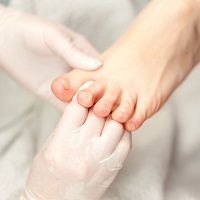New Diabetic Foot Treatment Guideline Released
The International Working Group on the Diabetic Foot (IWGDF) Guidance 2015 recently published its evidence-based international consensus guidance. This guideline addresses 5 specific areas of concern in diabetes.

The International Working Group on the Diabetic Foot (IWGDF) Guidance 2015 recently published its evidence-based international consensus guidance. This guideline addresses 5 specific areas of concern in diabetes:
- Prevention of foot ulcers in at-risk patients
- Footwear and offloading to prevent and heal foot ulcers
- Diagnosis, prognosis and management of peripheral artery disease in patients with foot ulcers
- Diagnosis and management of foot infections
- Interventions to enhance healing of chronic foot ulcers
Published ahead-of-print in Diabetes Metabolism Research and Reviews, this guideline includes a risk classification system that reminds clinicians to examine diabetics’ feet annually and more often if neuropathy, peripheral artery disease, deformity or ulcers are present.
The guideline also urges clinicians to formalize patient education, and extend counseling to family members and healthcare providers. Diabetics need to be more aware of the potential for foot involvement, self-protect, and watch their feet closely.
Despite awareness of the need for appropriate footwear, ill-fitting shoes are still the leading cause of ulcers. The guideline urges clinicians to examine patients’ shoes and speak up if they are troublesome.
The treatment section emphasizes using non-removable, knee-high off-loading devices for most patients if an ulcer develops. The guideline recommends revascularisation for any ulcer that does not show signs of healing within 6 weeks with optimal management.
A main thrust is organization and mobilization of the healthcare team. By this, the experts mean creating a chronic care system of prevention, education, monitoring, and prompt treatment. For some healthcare providers, this means changing the approach. Diabetic foot care is not an acute issue; it is a chronic problem that needs to be handled by general practitioners, podiatrist and diabetic educators continuously.
Once problems occur, these clinicians need to involve a diabetologist, surgeon, or other foot specialist and a shoe-maker, othotist or prosthetist. Serious problems need to be referred to a tertiary foot center.